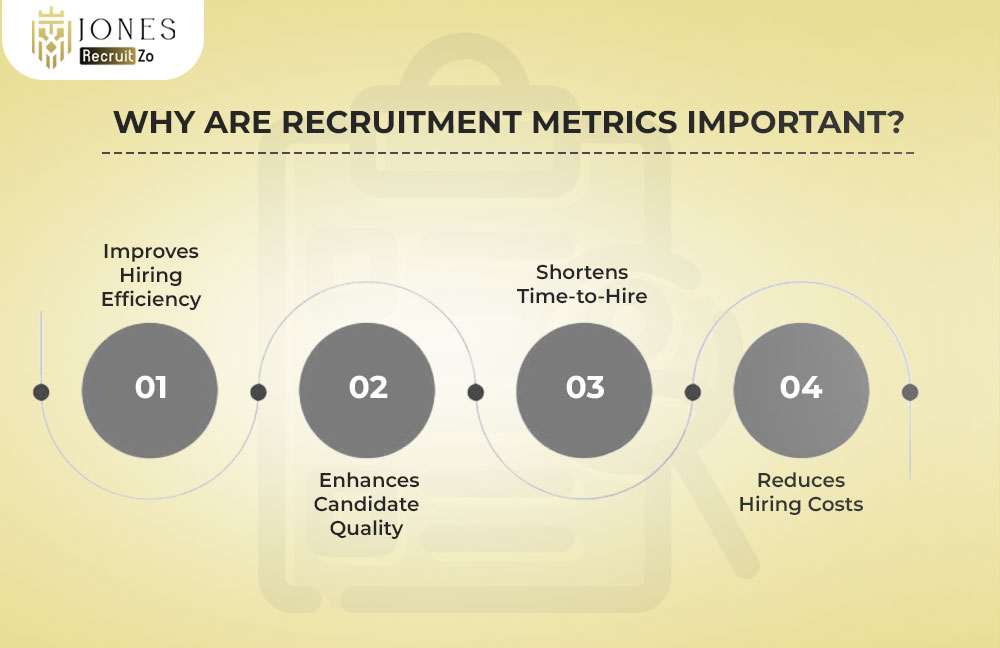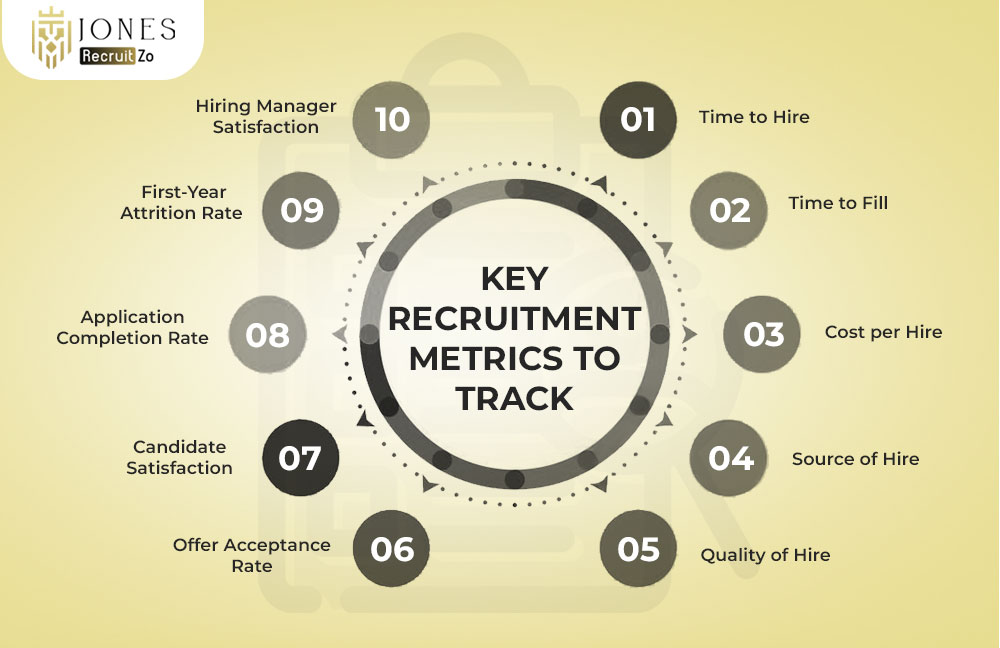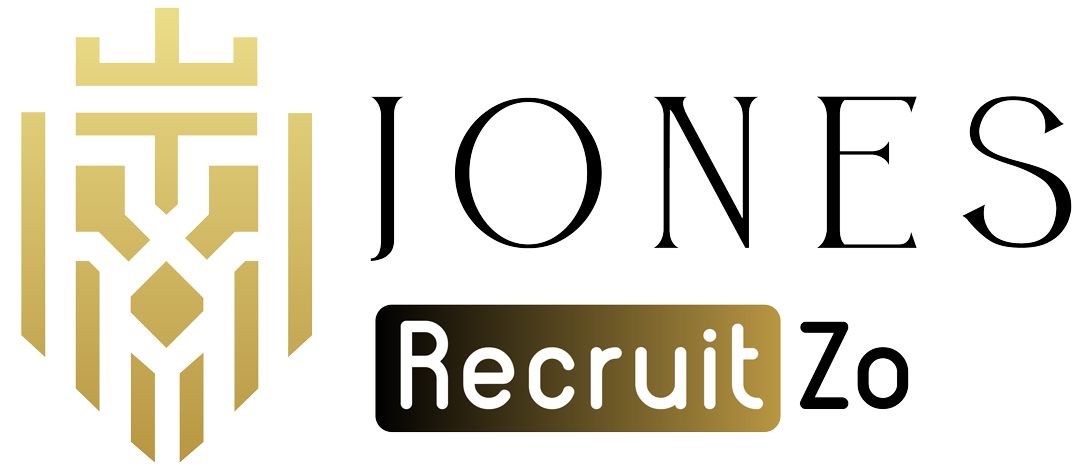What are Recruitment Metrics?
The recruitment metrics are the key performance indicators that assist in the measurement and appraisal of the effectiveness of hiring process. These data points will provide some insight into the alignment of the recruitment programs with the strategic objectives of the company so that teams can maximize performance and decision-making.
Why Are Recruitment Metrics Important?

The recruitment metrics ensure that one can have data-based insights to quantify the effectiveness of the hiring process in organizations so that they can optimize strategies, decision-making, and candidate experience. They help teams to monitor progress and eliminate wastages.
Improves Hiring Efficiency
By incorporating recruitment metrics within the HR, one could improve the efficiency by highlighting the areas that are working or not. Keeping an eye on such critical indicators as cost-per-hire and time-to-fill, HR teams will be able to narrow down on strategies that will allow attracting the right candidates in a shorter period, which will positively affect the outcome of recruiting metrics as a whole.
Enhances Candidate Quality
Recruitment measures enable companies to measure the fit between people hired and the job requirement after hire. These are used to streamline the recruiting process, resulting in closer job-person fit, and the net effect is increased quality and retention of the newly hired employees.
Shortens Time-to-Hire
Declaring reduction in time-to-hire cuts down costs and helps in ensuring fast hiring of talents. The metrics of recruitment without time-to-hire is what? It is an essential metric that shows lags or effectiveness in candidate flow in a recruitment funnel between application to acceptance.
Reduces Hiring Costs
The recruitment metrics will enable saving the costs as they illuminate the areas that require many resources. Businesses can determine how to make savings or how not to waste money. Metric tools in HR like cost-per hire can be used to budget future positions as well as enhance returns on the investments on recruiting.
Key Recruitment Metrics to Track

The key recruitment measures would be time-to-hire, cost-per-hire, quality of hire and source of hire. Such measures can be used to monitor, gauge, and enhance recruitment and guarantee higher efficiency, budget management, and talent acquisition effectiveness.
Time To Hire
The time to hire is an essential recruitment key performance indicator used to monitor the rate at which applicants to the firm rate to being an employee. It indicates the agility of the recruitment process and is highly instrumental in improving the experience of both the hiring party and the candidate.
Time To Fill
Time to Fill is a measurement of the recruitment process and checks the time taken to fill up the job after posting until final acceptance. It offers the invaluable information in the sense of the amounts of talents available and the efficiency of the recruiting measures provided at the sourcing and assessment stages.
Cost Per Hire
Cost per hire takes into consideration the total dollar cost of making a hire. This measure of recruitment entails advertisement, recruiter expenses and induction expenses. Knowledge of CPH can make it easier to quantify ROI of recruitment, and can help to better plan and budget the workforce.
Source of Hire
Source of Hire is one of the potent recruitment metrics to monitor which platforms provide quality candidates. Information provided by SoH helps recruiters to know where to allocate advertising dollars and gears better agency in terms of improved efficiency.
Quality of Hire
The recruitment measure is the contribution which a new recruit can bring to an organization. It evaluates performance, longevity, and the retention. Integrating recruiting metrics in the organization will enable the organization to make small adjustments in the selection of candidates and the overall effectiveness of the organization in the long run.
Offer Acceptance Rate
Offer acceptance rate is useful in measuring the levels of attraction by an offer of a company. A low acceptance rate may indicate a problem in culture or pay. This measure of recruitment is critical to the process of job offers enhancement and improving the hiring experience.
Candidate Satisfaction
This measure of recruitment is the perception of applicants towards the hiring processes. The received feedback is beneficial in improving the communication, openness, and interviewing that lead to a better employer brand and higher chances of hiring top-level talent.
Application Completion Rate
Application Completion Rate is used to measure the extent of candidates filling and sending job applications. It is an indication of recruitment in which the technical or design issues in your application process can be identified and be corrected by the HR in streamlining the processes and enhancing on user experience.
First-Year Attrition Rate
First year attrition rate captures premature exits and it can be used to trace the success of hiring decision. This recruitment measure will help reveal flaws in a hiring process or job compatibility, so that no candidate would be hired again in the future that would not suit the company and its policies.
Hiring Manager Satisfaction
Hiring manager satisfaction is also another useful measure of recruitment which indicates the effectiveness of the talent acquisition department to the internal demands. It makes hiring process provide people who will be able to fit in the job as well as fit in teams.
FAQs
1) What is Recruitment Metrics?
The recruitment metrics are the key performance indicators that assist in the measurement and appraisal of the effectiveness of hiring process. These data points will provide some insight into the alignment of the recruitment programs with the strategic objectives of the company so that teams can maximize performance and decision-making.
2) Why Are Recruitment Metrics Important?
The recruitment metrics ensure that one can have data-based insights to quantify the effectiveness of the hiring process in organizations so that they can optimize strategies, decision-making, and candidate experience. They help teams to monitor progress and eliminate wastages.
3) What are key recruitment metrics?
The key recruitment measures would be time-to-hire, cost-per-hire, quality of hire and source of hire. Such measures can be used to monitor, gauge, and enhance recruitment and guarantee higher efficiency, budget management, and talent acquisition effectiveness.
4) How can the Cost per Hire be reduced?
In order to lower the cost of hire, you must do the following: streamline your hiring procedure, take advantage of low-budget sourcing channels, automate routine activities, and enhance referral initiatives. Monitor recruitment metrics frequently to remove unneeded costs and process waste.









